Self Defense for LGBT: Self-Protection and Concealed Carry (CCW) for the LGBT Community
You're free to republish or share any of our articles (either in part or in full), which are licensed under a Creative Commons Attribution 4.0 International License. Our only requirement is that you give Ammo.com appropriate credit by linking to the original article. Spread the word; knowledge is power!
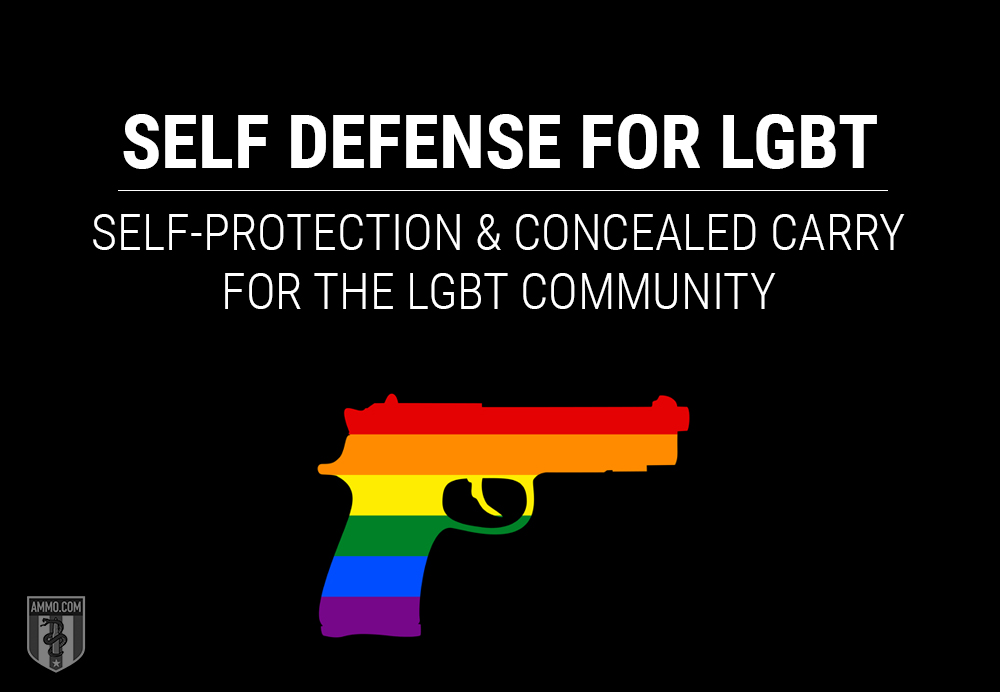 Throughout history, certain groups of people have been singled out for persecution. Because of what some see as dangerous differences, these outsiders experience ridicule and unprovoked violence at a much higher rate than the general population. The 20th century is littered with such examples: Jews, Gypsies, homoséxuals, and other non-Aryans in Nazi Germany, the Armenians in Ottoman Turkey, Christians in Uganda, anti-Communists during Mao’s Great Leap Forward, or anyone who was thought to be an intellectual during Cambodia’s Khmer Rouge.
Throughout history, certain groups of people have been singled out for persecution. Because of what some see as dangerous differences, these outsiders experience ridicule and unprovoked violence at a much higher rate than the general population. The 20th century is littered with such examples: Jews, Gypsies, homoséxuals, and other non-Aryans in Nazi Germany, the Armenians in Ottoman Turkey, Christians in Uganda, anti-Communists during Mao’s Great Leap Forward, or anyone who was thought to be an intellectual during Cambodia’s Khmer Rouge.
While the 21st century has thus far been seemingly less bloody for outsiders, thanks to an increasingly tolerant modern world, certain groups are still targeted more often than others – including those who identify as lesbian, gay, biséxual, or transgender (LGBT). Using this umbrella term in the broadest sense, LGBT individuals continue to experience unprovoked violence at a much higher rate than the general population, yet self defense designed specifically for them is rarely discussed, let alone available. This is in spite of horrific attacks like the well publicized torture and killing of Matthew Shepard or the Pulse Nightclub mass murder.
Our view is that adults should be free to associate with one another, particularly in the privacy of their own homes, without state interference. Not everyone agrees with this point of view. However, it’s hard to ignore unprovoked violence on members of the LGBT community simply because some view their lifestyle as immoral – particularly because, nowadays, the act of even legally owning a gun is viewed as immoral by some 20 percent of the country.
Thus, if gun ownership is at least in part about defending one’s personal sovereignty from either state power or the unprovoked violence of another, then a self-defense guide specifically for LGBT individuals is in order.
A Sad History of Violence Against Gays and Other LGBT
Before the freedom fights and the Civil Rights Movement of the 1960s, American gays faced a life filled with anti-gay legislation and a society that believed being gay was both a moral sin and something individuals could “overcome.” The FBI and police departments, as well as state and local governments, kept lists of known homoséxuals, those they associated with, and where they socialized. Even the United States Post Office tracked homoséxual packages, recording where they were delivered. Gay establishments were shut down by police and people were arrested and jailed for being gay.
In 1952, the first edition of the Diagnostic and Statistical Manual (DSM), which detailed mental health diseases recognized by the American Psychiatric Association, listed homoséxuality as a mental disorder. It remained as such until 1974.
Gay Panic
Being gay was not only considered a mental illness, but violence against gays was also justified through “gay panic,” which claims that violence is a rational response to finding out an individual was gay, making it both understandable and acceptable. Gay panic has even been used in murder cases and has led to lesser sentencing. As recently as 2015, a Texas man used gay panic as a defense in killing his neighbor. While the perpetrator was found guilty of criminally negligent homicide, he was only sentenced to six months in jail, along with 10 years probation, 100 hours of community service, and $11,000 in restitution. As of spring 2019, only California, Illinois, and Rhode Island have legally banned the use of gay panic or trans panic as a defense.
The Stonewall Riots
By 1969, violence against gays and the LGBT community was recognized for what it was – unprovoked violence based on these individuals’ séxual preference. On June 28, 1969, a group of police officers raided the Stonewall Inn, a gay bar located in Greenwich Village, Manhattan, New York. While raids weren’t uncommon, the police lost control of the raid and were unable to control the crowds.
This became known as the Stonewall Riots, which erupted into violence, riots, and protests that lasted five days and birthed the gay rights movement.
From “Don’t Ask, Don’t Tell” to Obergefell vs. Hodges
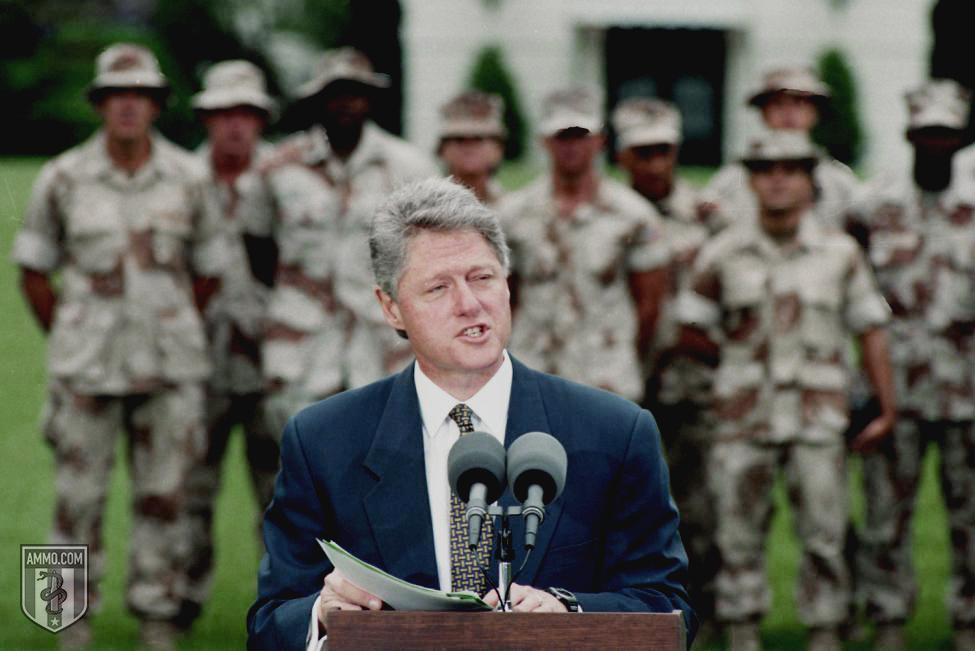 In 1982, Wisconsin was the first state to outlaw discrimination based on séxual orientation. In 1993, then President Bill Clinton passed “Don’t Ask, Don’t Tell,” which formally allowed gay men to enter the military. On the surface, this policy looked like a step forward for LGBT rights, but it forced gays and lesbians to remain in the closet, as it still outlawed homoséxual activity in the armed forces. Those serving had the option of keeping their secret or coming out and losing their job. "Don’t Ask, Don’t Tell" also placed unprecedented power in the hands of military superiors, some of whom threatened to turn in their female subordinates as gay to coerce séxual favors.
In 1982, Wisconsin was the first state to outlaw discrimination based on séxual orientation. In 1993, then President Bill Clinton passed “Don’t Ask, Don’t Tell,” which formally allowed gay men to enter the military. On the surface, this policy looked like a step forward for LGBT rights, but it forced gays and lesbians to remain in the closet, as it still outlawed homoséxual activity in the armed forces. Those serving had the option of keeping their secret or coming out and losing their job. "Don’t Ask, Don’t Tell" also placed unprecedented power in the hands of military superiors, some of whom threatened to turn in their female subordinates as gay to coerce séxual favors.
By 1996, Clinton was talking about gay rights more often, but blatantly defiled his support by signing the Defense of Marriage Act (DOMA), a federal law that defined marriage only as a union between a man and a woman. What’s more, DOMA allowed states to refuse to recognize same-séx marriages that occured in other states.
Until 2013, when Section 3 of the Act was eliminated, DOMA barred same-séx spouses from being recognized in federal laws, making it impossible for them to receive federal marriage benefits, including social security survivor’s benefits, insurance benefits for federal employees, filing joint income tax, bankruptcy, and immigration.
By 2000, Vermont recognized civil unions between same séx partners and in 2003, in Lawrence vs. Texas, the U.S. Supreme Court determined that sodomy laws were unconstitutional. Justice Anthony Kennedy said of the landmark ruling: “Liberty presumes an autonomy of self that includes freedom of thought, belief, expression, and certain intimate conduct.”
In 2015, in Obergefell vs. Hodges, the SCOTUS ruled that the 14th Amendment right to personal choice and individual autonomy applied to same-séx couples and their right to marriage. While this ruling granted rights to many LGBT couples, it did so through the courts, not through the people via legislation or ballot initiative. Much like Roe vs. Wade, this court decision has led to an increase in contention, as it undermines state sovereignty and, in some areas, circumvented the will of the people.
Justice Scalia voiced his thoughts in the dissenting opinion:
"The substance of today’s decree is not of immense personal importance to me. The law can recognize as marriage whatever séxual attachments and living arrangements it wishes, and can accord them favorable civil consequences, from tax treatment to rights of inheritance. Those civil consequences – and the public approval that conferring the name of marriage evidences – can perhaps have adverse social effects, but no more adverse than the effects of many other controversial laws. So it is not of special importance to me what the law says about marriage. It is of overwhelming importance, however, who it is that rules me.
Today’s decree says that my Ruler, and the Ruler of 320 million Americans coast-to-coast, is a majority of the nine lawyers on the Supreme Court. The opinion in these cases is the furthest extension in fact – and the furthest extension one can even imagine – of the Court’s claimed power to create “liberties” that the Constitution and its Amendments neglect to mention. This practice of constitutional revision by an unelected committee of nine, always accompanied (as it is today) by extravagant praise of liberty, robs the People of the most important liberty they asserted in the Declaration of Independence and won in the Revolution of 1776: the freedom to govern themselves."
The Justice was not attempting to be anti-gay with his sentiments, he was trying to do his job. The courts are not the legislature. Perhaps Justice Roberts says it best:
"They contend that same-séx couples should be allowed to affirm their love and commitment through marriage, just like opposite-séx couples. That position has undeniable appeal; over the past six years, voters and legislators in eleven States and the District of Columbia have revised their laws to allow marriage between two people of the same séx.
But this Court is not a legislature. Whether same-séx marriage is a good idea should be of no concern to us. Under the Constitution, judges have power to say what the law is, not what it should be. The people who ratified the Constitution authorized courts to exercise “neither force nor will but merely judgment.”
Although the policy arguments for extending marriage to same-séx couples may be compelling, the legal arguments for requiring such an extension are not. The fundamental right to marry does not include a right to make a State change its definition of marriage. And a State’s decision to maintain the meaning of marriage that has persisted in every culture throughout human history can hardly be called irrational. In short, our Constitution does not enact any one theory of marriage. The people of a State are free to expand marriage to include same-séx couples, or to retain the historic definition.
For both gay and straight Second Amendment activists in particular, changes in law made by judicial fiat are worrisome because they set the precedent that judges (not the legislature) can “reinterpret” gun rights however they’d like – regardless of prior case law and the Constitution.
LGBT Self Defense 101: Learning to Protect Yourself
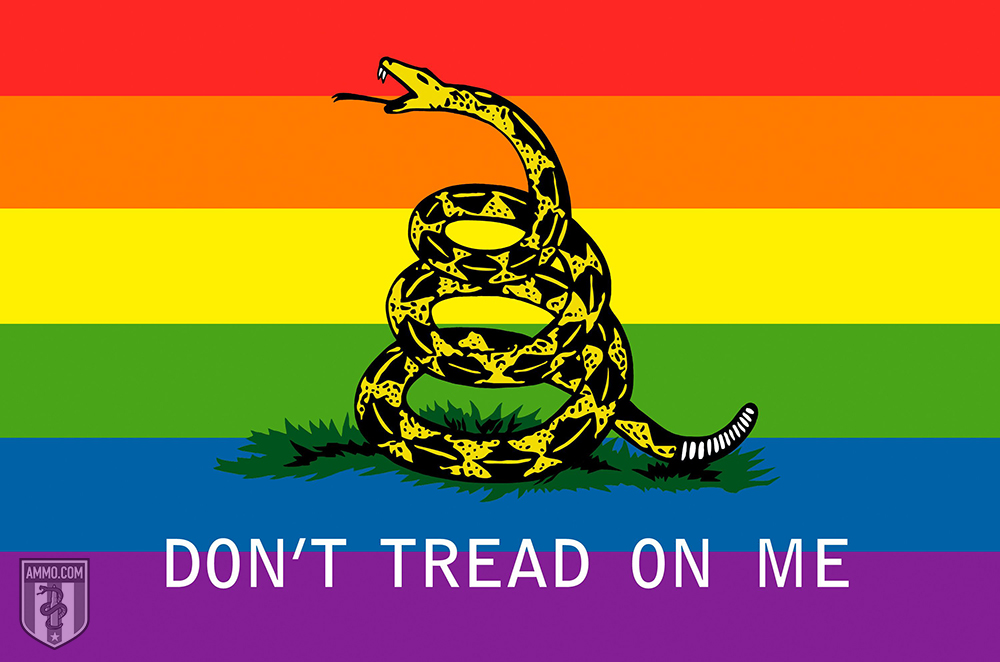 Setting aside how changes in LGBT laws have occured in America, one fact remains: Unprovoked violence is on the rise, with up to a 10-percent increase in some areas of the country, and a significant increase in victimization of transgender people. According to the 2015 U.S. Report on Transgender Survey, trans individuals experience a disproportionate amount of mistreatment and harassment:
Setting aside how changes in LGBT laws have occured in America, one fact remains: Unprovoked violence is on the rise, with up to a 10-percent increase in some areas of the country, and a significant increase in victimization of transgender people. According to the 2015 U.S. Report on Transgender Survey, trans individuals experience a disproportionate amount of mistreatment and harassment:
- 10% were victims of family violence
- 46% were verbally attacked within the last year
- 9% were physically attacked within the last year
- 47% were séxually assaulted in their lifetime
- 10% were séxually assaulted in the last year
- 54% were victims of intimate partner violence
With these staggering statistics, it makes sense the LGBT community has a huge need for self defense, but sadly, it’s lacking. One of the reasons is because some people who teach classes on self defense – those skilled at boxing, martial arts, or firearms – don’t want members of the LGBT community in their classrooms. Thus, groups like the Pink Pistols, a self-identified “gay gun rights group,” are forming to serve other members of their community.
Self protection is a natural right, one that’s protected by the U.S. Constitution, and those most at risk for violence still need to learn basic self-defense strategies – the first of which is awareness.
Be Aware of Your Surroundings
Awareness of surroundings is the first defense against personal violence and can reduce your risk of becoming a victim. Pay attention to people around you and what they’re doing. This means not playing on your phone and taking the earbuds out of your ears. It means keeping your eyes up, scanning the area you’re walking, and knowing where the exits are when you’re inside a building.
It also means avoiding unsafe places and running errands during the day. When you’re out, go with a friend and walk with a purpose. If you must walk alone, talk to someone on the phone, being sure to tell them where you are and what you’re walking toward. Opt for well-lit roads and don’t linger in isolated places.
When walking to a vehicle, have your keys ready to go before you approach the car. Check the backseat through the glass before unlocking the door and don’t linger once you’re inside. Instead, lock the car, start it, and get moving as soon as possible.
Use the Weapons at Hand
When physically attacked, a gun or knife may be your best option. These may not always available, but you can still protect yourself. Instead of feeling helpless, use what you have to fight back against an assailant. Whether it’s a purse or your keys, hit them with everything and anything you can.
As someone who’s at a higher risk for physical and séxual violence, you may want to consider carrying a few key items that can help you fight off or deter a perpetrator. These can include:
- Whistle
- Flashlight
- Mace or pepper spray
- Kubaton (a self-defense keychain)
- Stun gun
- Tactical pen
If none of these are available, or you end up in hand-to-hand combat, remember the elbow is one of the hardest parts of your body – use it to jab and hit your assailant.
Self-Defense Tips
- Avoid conflict whenever possible. Don’t engage. Walk away. Ignore them.
- Draw attention to yourself by getting loud or blowing a whistle. No perp wants attention drawn to their crime.
- Don’t be meek. Tell the assailant to go away and leave you alone. Don’t let them think you’re already a victim or afraid.
- Don’t hand the attacker anything. If they ask for your wallet or bag, throw it away from you and take the opportunity to run.
- Stay out of arm’s reach and, whatever you do, don’t get in a vehicle with them. If they try to force you, fight like your life depends on it (because it very well may).
- Fight dirty. If it comes to physical fighting, don’t fight nice. Do whatever you can to hurt and injure the perpetrator. Scratch their eyes, knee their groin. Nothing is off limits.
- If you can get away and run, don’t run in a straight line, especially if the attacker may have a gun. Instead, run in a zigzag pattern.
- When an attacker comes at you from behind, lean into them and throw your head back as hard as you can.
Choosing to Carry Concealed
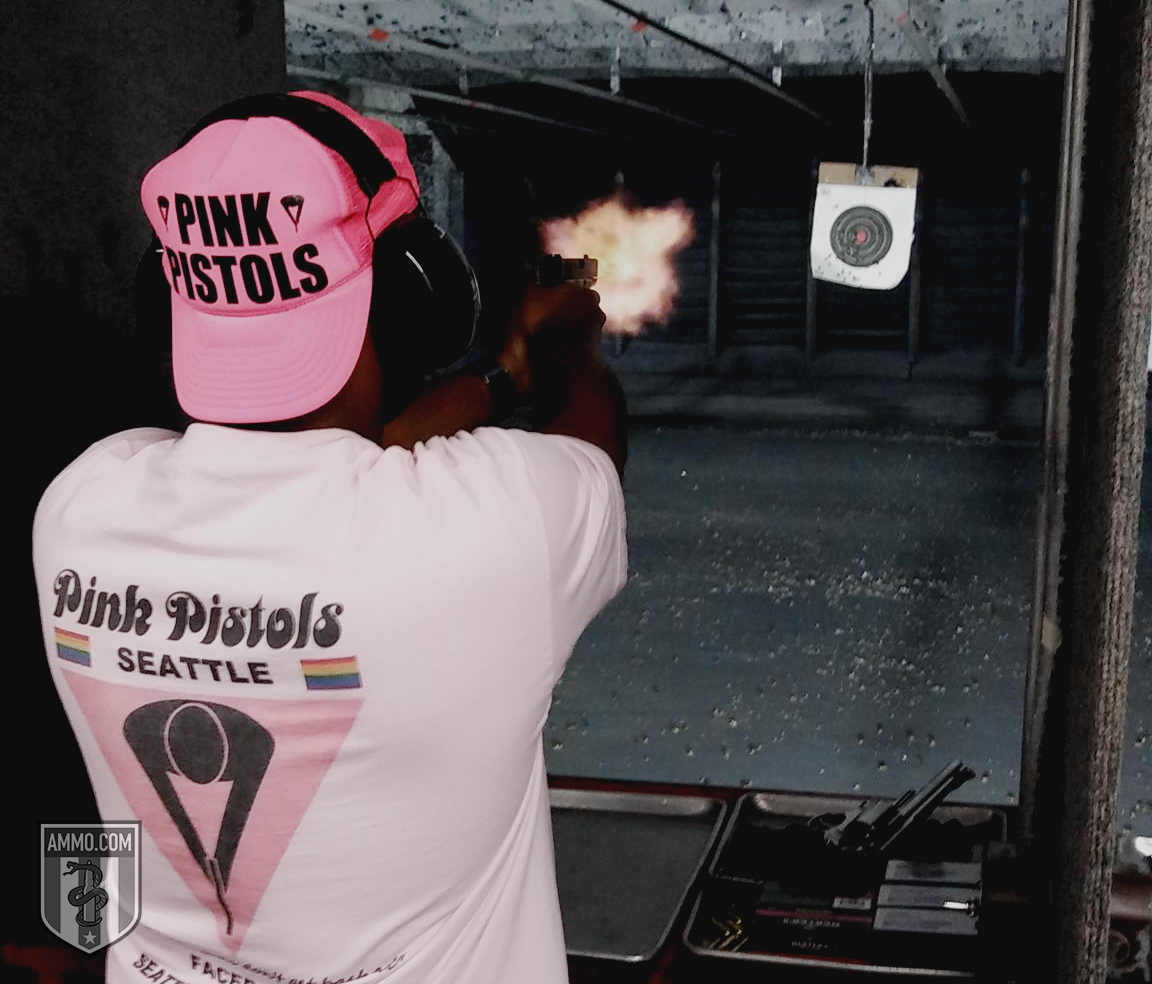 If you decide to carry a concealed weapon, then congratulations, you’re choosing a level of protection you can’t get with other self-defense methods. The most important things to remember about carrying concealed are finding a firearm you’re comfortable shooting and being ready to use it.
If you decide to carry a concealed weapon, then congratulations, you’re choosing a level of protection you can’t get with other self-defense methods. The most important things to remember about carrying concealed are finding a firearm you’re comfortable shooting and being ready to use it.
Finding a Firearm You’re Comfortable Shooting
Many considerations go into choosing a firearm. Experience can make the difference between opting for a .45 ACP semi-automatic or a .380, while body size and hand strength may make a shooter opt for a .38 Special over a .357 Mag.
When you’re deciding on a weapon, especially one you want to carry concealed and use for self defense, you need to ensure you can handle the firearm. That means you have the manual dexterity to rack the gun and the finger strength to pull the trigger, as well as the wrist and forearm stability to withstand the recoil and muzzle lift while keeping control of the gun.
Once you find a firearm you can manage and it feels comfortable in your hand, it’s time to start training with it, allowing yourself to become adept and confident when using it. Shoot your concealed carry weapon as often as possible. Shoot it at the range. Shoot it sitting and shoot it standing. Shoot it with your left hand and your right. Shoot it until it becomes an extension of your body and feels like it’s supposed to be in your hand.
When you’re not at the range, dry fire your handgun at home using snap caps or rubber bullets. Withdraw it and aim from your bed. From your bathroom. From your car, both the front and the back seat (just make sure the neighbor’s don’t see).
Learning to Carry Concealed
Second to being comfortable with your firearm, finding the right holster is essential to carrying concealed. When holster shopping, opt for one that sits snug against the body and offers good retention in a position from which you can easily withdraw. You want a holster that keeps your gun safe and sound, whether you’re running down the street in four-inch heels or on the floor, wrestling with an attacker.
Once you have the right holster (which may actually be three or four holsters), purchase a good holster belt (essential in keeping your pants in place while carrying concealed) and start carrying your concealed carry weapon (CCW).
At first, you may find that you’re uncomfortable carrying concealed. That’s normal. Start small, carrying downtown or into the grocery store. Wear loose, patterned clothing and don’t reach to check the firearm, which can draw attention to your CCW.
With practice, concealed carry becomes second nature and you may even feel odd without your firearm on you.
LGBT-Specific Issues to Concealed Carry
Some LGBT individuals may have specific issues or roadblocks when it comes to carrying concealed that other demographics don’t face. The issue of identification is especially troublesome to those who are transgender, even more so to those who are or have transitioned.
Transgender Identification
A survey of transgender people showed that when it comes to identification:
- 64% never legally changed their name
- 68% had no identification with their preferred name and gender
- 35% said cost was a barrier to updating their forms of identifications
- 9% of those who wanted to were actually able to change their gender on their birth certificates
Of all those surveyed, only 11 percent had all of their forms of identification, with both their preferred name and gender.
This identification issue creates a significant problem to not only obtaining a concealed carry permit, but to legally purchasing firearms and successfully completing a background check. If you’re struggling with making the necessary identification changes, seek professional help from an organization like the Transgender Legal Services Network, which can assist in finding LGBT-friendly lawyers and navigating the complex processes.
Lack of Trust in the Police
To complicate matters even more, many in the LGBT community have a lack of trust in the police. After all, it’s the police who spent years raiding their clubs and arresting people for nothing more than being themselves.
Many in the LGBT community have suffered harassment from the police and many, especially those who are trans, don’t feel as though they can go to the police when needed, as they’ve been the victims of police disrespect in the past. This leads to crimes not getting reported, victims not seeking help, and perpetrators continuing to assault victims and engage in unprovoked violent crimes. Society sees an increase in victimization and a downward cycle of distrust, which worsens the relationship between law enforcement and the LGBT community.
To overcome this, crimes must be reported. If the police don’t respond or react, go to the papers. Go to the media. Tell your story on Facebook and make the lack of response an issue. Continuing to stay quiet doesn’t fix the problem. Advocate for the hiring of LGBT-friendly officers and work toward cooperation.
“Coming Out” as a Second Amendment Supporter
While many LGBT people feel like they’re missing the support of both society at large and the police, they may also be lacking social support when it comes to choosing to carry concealed and training for self defense. After all, an estimated three-fourths of those who identify as LGBT vote Democrat and nearly 80 percent lean toward Democratic policies.
For the 20 percent or so that lean toward Conservative politics, their political philosophies can be an area of stress, as much of their LGBT counterparts strongly disagree with a pro-Second Amendment stance. It’s not unheard of for gay men and women, as well as those who are trans, to come out to their community as politically Conservative and be ousted because of it.
Finding LGBT Self-Defense Groups
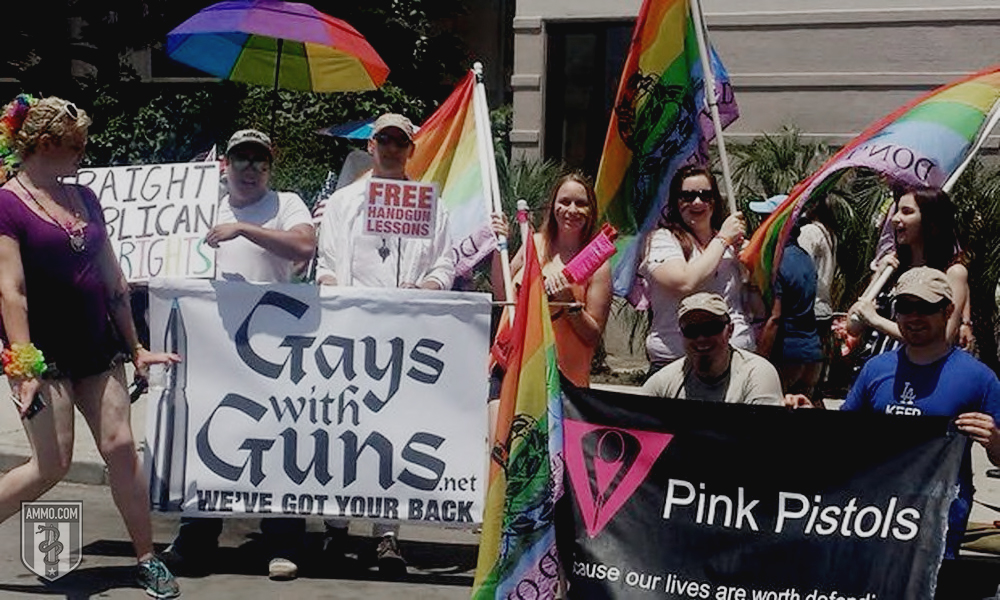 As previously mentioned, LGBT are not the norm at most of America’s gun stores and shooting ranges, which can keep many gay and trans people from training for self defense. For years, the only gay gun groups were focused on gun control, such as Gays Against Guns. But in the last 10 years, gun support groups have started popping up across the country.
As previously mentioned, LGBT are not the norm at most of America’s gun stores and shooting ranges, which can keep many gay and trans people from training for self defense. For years, the only gay gun groups were focused on gun control, such as Gays Against Guns. But in the last 10 years, gun support groups have started popping up across the country.
Perhaps one of the more known groups, the Pink Pistols, started in 2000, and focuses both on political activism as well as gun training. Their motto says it all: “Armed gays don’t get bashed,” which comes from a 2000 Salon article that inspired the formation of the Pink Pistols, where Jonathan Rauch stated, “If it became widely known that homoséxuals carry guns and know how to use them, not many bullets would need to be fired.”
Other groups have followed suit, including:
- Outright Libertarians: Focuses on building a bridge between LGBT individuals and the Libertarian party
- Stonewall Shooting Sports of Utah: While not specific to LGBT issues, the nonpartisan organization has thousands of LGBT members and supports the Second Amendment
- Armed Equality: A SoCal group that focuses on making self-defense training more accessible to the LGBT community and stresses the importance of educated decisions
- Operation Blazing Sword: A group that provides gun education to the LGBT community to ensure responsible gun ownership
- Trigger Warning: A gun club and organization for gun training for the LGBT community, specifically focused on those who identify as queer or trans
- Log Cabin Republicans: A Republican group that’s dedicated to the rights and protection of the LGBT community and making the GOP more inclusive
After the Pulse Nightclub shooting, membership to such clubs has more than doubled throughout the country. Many believe that as more gays, lebians, and trans people begin carrying weapons, the high rate of violence against them will begin to drop.
The LGBT Fight for Equality
As the Pink Pistols motto says, “Armed gays don’t get bashed.” And whilst LGBT people are still victims of violence at a much higher rate than the general public, the community as a whole and notable members of it are beginning to fight back.
From training in self defense and carrying concealed to supporting LGBT-friendly gun stores and shooting ranges, there is a rise in gun-carrying LGBT people who are learning to protect themselves and those they love.
Self Defense
- Arming Yourself: A Woman's Guide to Self Defense and Concealed Carry (CCW)
- Protecting Your Family: A Parent's Guide to Self Defense and Concealed Carry (CCW)
- Arming the Elderly: A Self-Defense Guide for Senior Citizens
- Holsters for Self Defense: A Guide to Carrying Concealed
- Arming Toddlers and The "Kinder-Guardians" Program: A Shamefully Bad Idea
- Handgun Wounding Factors: A Caliber Effectiveness Guide for Self Defense and Body Damage
- Self Defense for LGBT: Self-Protection and Concealed Carry (CCW) for the LGBT Community
- Arming the Disabled: A Self-Defense and Concealed Carry Guide for People With Disabilities
